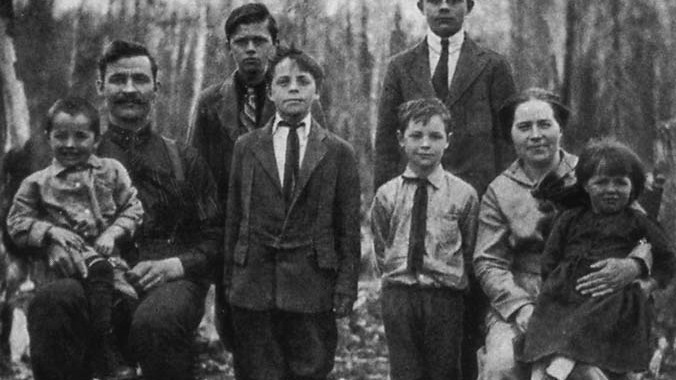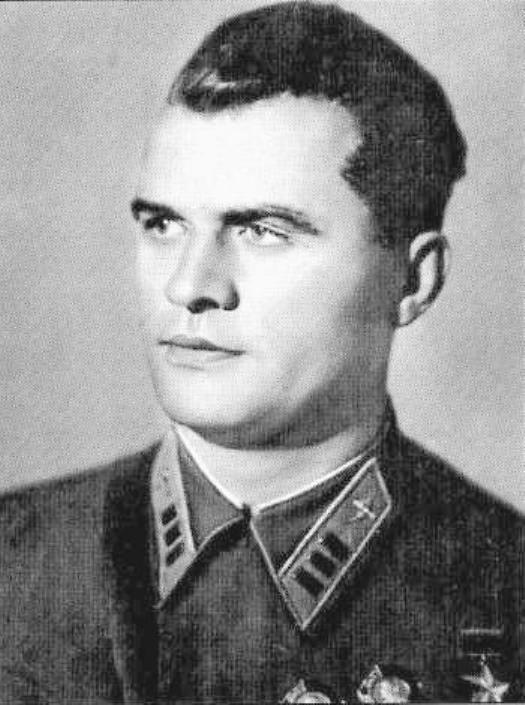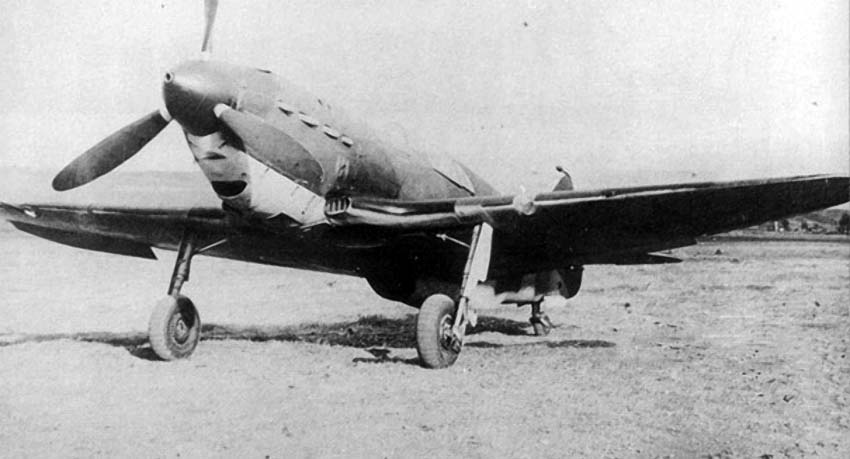Soviet pilot, experienced test pilot, fighter pilot, who received the title of Hero of the Soviet Union twice, friend and colleague of Chkalov, irreplaceable and fearless Suprun Stepan Pavlovich ... He lived a short, only 34 years old, but life, bright as a flash, did not leave children, but left behind a great memory. His biography can be read as a fascinating novel - he managed to do so many things. Contemporaries said that Suprun changed the history of the Soviet military aircraft industry and aviation.
A family
The biography of Stepan Pavlovich Suprun is full of bright events. On August 2, 1907, a future hero was born in the family of Pavel and Praskovya Suprunov in Ukraine, in the village of Rechki. Stepa's father was at odds with his grandfather, for which the latter, suspecting his son of complicity with the rebels, drove the young family with small children out of the house. Pavel Suprun then had to look for work at the sugar factory, but even there, obeying his violent disposition, he took part in a strike, and then left for Canada, fearing the increased interest of the police. Having settled in the town of Winnipeg, for more than two years he managed to earn on a cryptographic card - a special ticket for an ocean boat, and in 1913 he moved his wife with three children to Canada.
In a foreign land
Stepan Pavlovich Suprun, like his father, had a rebellious disposition. A tall, strong boy was an authority among peers, as he had a keen sense of justice and could enter into a dispute with adults, for which he was often punished. Later, Stepan's younger sister recalled that the older brother at the age of 16 was a ringleader and a fighter, but he always protected the younger ones. She even thought that he would become a gangster, a gangster, because one day he stole a gun from a parked car. But Stepan himself said that already then, back in 1922, he was a member of the cell of the League of Young Communists, where he had come at the insistence of his father, and was preparing to become a revolutionary.

In 1915, due to the crisis in Canada, Stepan's father, Pavel, lost his job, but staked out a small plot in a dense forest, built a house and planted a plot of wheat. Having become masters of the earth, the Supruns briefly felt a little relief. But Pavel Mikhailovich, who did not give up hopes of returning to his homeland, closely watched the upheavals in Russia. In 1917, he finally convinced himself that it was time to return. In addition, the aged father, Mikhail Suprun, called his son home. But the departure was postponed, first due to lack of money, then due to illness of his mother, Praskovia.
Homecoming
The plans of the fiery revolutionary Pavel Suprun were destined to come true only in 1924. With the help of representatives of the Canadian Communist Party, the Suprun family, in which there were already six children, moved back to Russia. By this time, Stepan graduated from the 7th grade of a school in Canada and could continue his studies at home. But it did not work out right away. The conflict between father and grandfather drove the family first to Kazakhstan, and then to relatives in Ukraine, in the city of Sumy, where the local regional executive committee elected Pavel Suprun as secretary. Styopa first studied with the crew master in Belopol, then got a joiner in the committee to combat unemployment in Sumy. Without abandoning his dream of helping the cause of the revolution, he read a lot and studied hard. In 1928, Stepan began working at the engineering plant in Sumy. And during the call he asked that he be taken into the aviation forces. So he went to school to train aviation specialists, and after that, in 1931, he graduated from a military military school. In the documents of those years, a talented cadet was described as a future experimenter, researcher and an excellent fighter pilot. Thus began the flight career of Stepan Pavlovich Suprun.
Striving up!
A year after graduating from the military pilot school, Suprun was already spoken of as a first-class specialist. During the service in Bryansk, they even got him to train young pilots. Everyone who worked with the young pilot noted his incredible endurance, desire to study and discipline. In his enthusiastic letters to the family, he talked about new technology, his colleagues, plans for the future. It was thanks to his enthusiasm and enthusiasm that the younger brothers followed in his footsteps. Stepan Pavlovich Suprun was able to bring up a worthy change in the person of not only his brothers, but also numerous students and associates, who unconditionally recognized his authority and admired his skill.
Test pilot
Thanks to the positive characteristics of his senior comrades, Stepan Suprun in 1933 was transferred to the Air Force Research Institute for test work. His experience and ability to control any machine, attention to detail and pilot skill allowed him to quickly gain the honor and respect even from such sky professionals as Vasily Stepanchenko, Valery Chkalov and Petr Stefanovsky. Suprun from the first days participated in the tests of various types of aircraft. He volunteered to participate in the experiment with the Vakhmistrov’s whatnot, when two light fighters were suspended under the wings of a large airplane. For more than five years, Stepan Suprun participated in air parades over Red Square, demonstrated the most difficult aerobatics, experienced experimental equipment. For his services and achievements, he received the Order of Lenin in 1936, and a year later became a deputy of the Supreme Soviet of the USSR. Suprun’s opinion on the evaluation of prototype aircraft was accepted as the ultimate truth. His words that the machine did not match were enough to not even put the experimental aircraft on the runway. If the resolution of Suprun was to “launch into a series”, mass production began immediately. In 1938, in the certification of Stepan Pavlovich Suprun, a Soviet test pilot, the word "irreplaceable" first appeared.
Indispensable
By December 1938, the irreplaceable pilot already had more than 1200 flying hours. And at the same time, he clearly felt that he was patronized and limited to work with experimental machines. Then, from the south of Spain, where the Civil War was fought, reports began to arrive that the Soviet I-16 fighter was losing to the Messerschmitt. Replacement required. Stepan Suprun sincerely believed in the brainchild of aircraft designer Polikarpov and insisted on his participation in the tests of the I-180, which they were going to put into production, for revision. In the winter of 1938, during a test flight on this fighter, a famous pilot, a hero of the Soviet Union Valery Chkalov, a close friend of Suprun crashed, which made Stepan even more strive for testing new prototypes. To achieve his goal, he even had to write a letter to Kliment Efremovich Voroshilov, in which he pointed out the need to evaluate the fighter. He received permission to fly, but he did not disclose the secret of the obstinate plane. Light fighter more than once or twice let the experienced pilot down, forcing him to suffer from failures. When during the flight of the I-180 he ceased to obey the pilot and killed another Suprun ally, Thomas Susie, - Stepan decided to never have children. He considered himself not entitled to cause grief to his family.

Stepan Suprun was not able to gain combat experience in Spain, where he sought, but in the summer of 1939 he went to China by order of his command to defend the city of Chongqing from Japanese aircraft. In the very first battle, the “unfired” pilots led by Suprun showed what the Soviet soldiers were capable of. They rushed into battle along with veterans and brilliantly carried out attacks. The Soviet military fighter pilot Stepan Suprun showed his talent precisely in this battle. The enemy left the battlefield. Later, on the recommendation of Suprun, the fighters began to be equipped with heavy machine guns, which greatly increased the firepower of the machines.
Ambiguous LaGG-3
Stepan Suprun returned to Moscow to perform a special task in the winter of 1940. The war, which erupted more and more, made us hurry with the improvement of aviation. A number of new Yak-1, MiG-3, LaGG-3 fighters were developed and built, which required overflights and recommendations. MiGs and Yaks are traditionally made on the basis of duralumin designs. But the development engineers S. Lavochkin, M. Gudkov and V. Gorbunov suggested using completely new material for building the aircraft - wood.

A single monoplane fighter, polished to a shine, aroused the interest of the pilots. In the summer of 1940, Stefanovsky and Suprun tested a new fighter. But even the survivability of the machine and the efficiency of its production did not compensate for the weak engine, low carrying capacity, design flaws and, most importantly, instability in flight. Suprun compared the landing on LaGG-3 with the kisses of a tigress, it was so dangerous. Nevertheless, after improvements, the aircraft was launched into mass production and was used as a fighter, interceptor, bomber and reconnaissance aircraft during World War II.
War
Stepan Pavlovich Suprun met the tragic Sunday of the outbreak of war in Sochi. As soon as news of the German attack became known, he immediately flew to Moscow. Authority and merit helped him break through to Stalin to share the idea of creating a combat regiment of test pilots. After obtaining personal permission from the Commander-in-Chief Suprun, the newest aircraft Il-2, MiG-3, TB-7 and LaGG-3, as well as Yak-1 M., were ordered from factories on June 27 to order the creation of six new regiments. Suprun, his comrade-in-arms and friend Stefanovsky were to complete 2 fighter regiments on the MiG-3.
The 401th Special Purpose Fighter Aviation Regiment under the command of Stepan Suprun appeared on the Western Front on July 1, 1941. The aircraft gave the first victory battle immediately on the day of arrival. Suprun himself that day forced two enemy aircraft to crash. According to the memoirs of colleagues, Stepan Pavlovich often joined the battle, even if there were more opponents, but each time he won. He himself led the pilots into battle, participated in reconnaissance and escort flights to cover heavy vehicles.
For four days of fighting, fighters led by Suprun destroyed 12 enemy aircraft in air battles, blew up two crossings and a railway bridge. The commander himself did not cease to constantly train his subordinates, he demanded strict discipline and strict execution of orders. Each time, he personally engaged in air combat and destroyed four German aircraft. July 4, 1941 was a fateful day for Stepan Suprun.
Hero's death
The death story has two versions. According to the first, Stepan Suprun, consisting of dozens of escort of bombers, flew on mission, but on the way back he decided to conduct reconnaissance and with his partner Ostapov separated from the group. In the sky above the villages of the Tolochin district of the Vitebsk region, a battle broke out. Ostapov noticed the German planes, but was shot down. Suprun was left alone and once again entered into an unequal battle. But he did not notice escort aircraft in the clouds, was seriously wounded and, despite the heroic attempt to reach the ground, crashed down. The battle witnesses subsequently discovered a charred gold star under the wreckage of the aircraft.
According to the second version, Suprun's plane, which decided to conduct reconnaissance at a low altitude, was shot down by fire from the ground. But this version contradicts the testimony of numerous witnesses who saw Suprun's air battle with the Messerschmitts.
Everlasting memory
Over his short life, Stepan Pavlovich Suprun received awards more than once. In addition to the Order of Lenin in 1936, he received a passenger car as a reward. So his achievements and merits in piloting were noted by the government. Suprun received his first title of Hero of the Soviet Union along with the Golden Star and the second Order of Lenin in 1940, being in the rank of major. Twice he became the hero of the Soviet Union in the first year of the war, but the title was awarded to him posthumously.
The memory of the legendary pilot is still alive. Sumy has a bronze bust, a memorial plaque and a street named after him. Monuments are installed in with. The river and the city of Belopol. In Moscow and Sevastopol there are also Stepan Suprun streets.